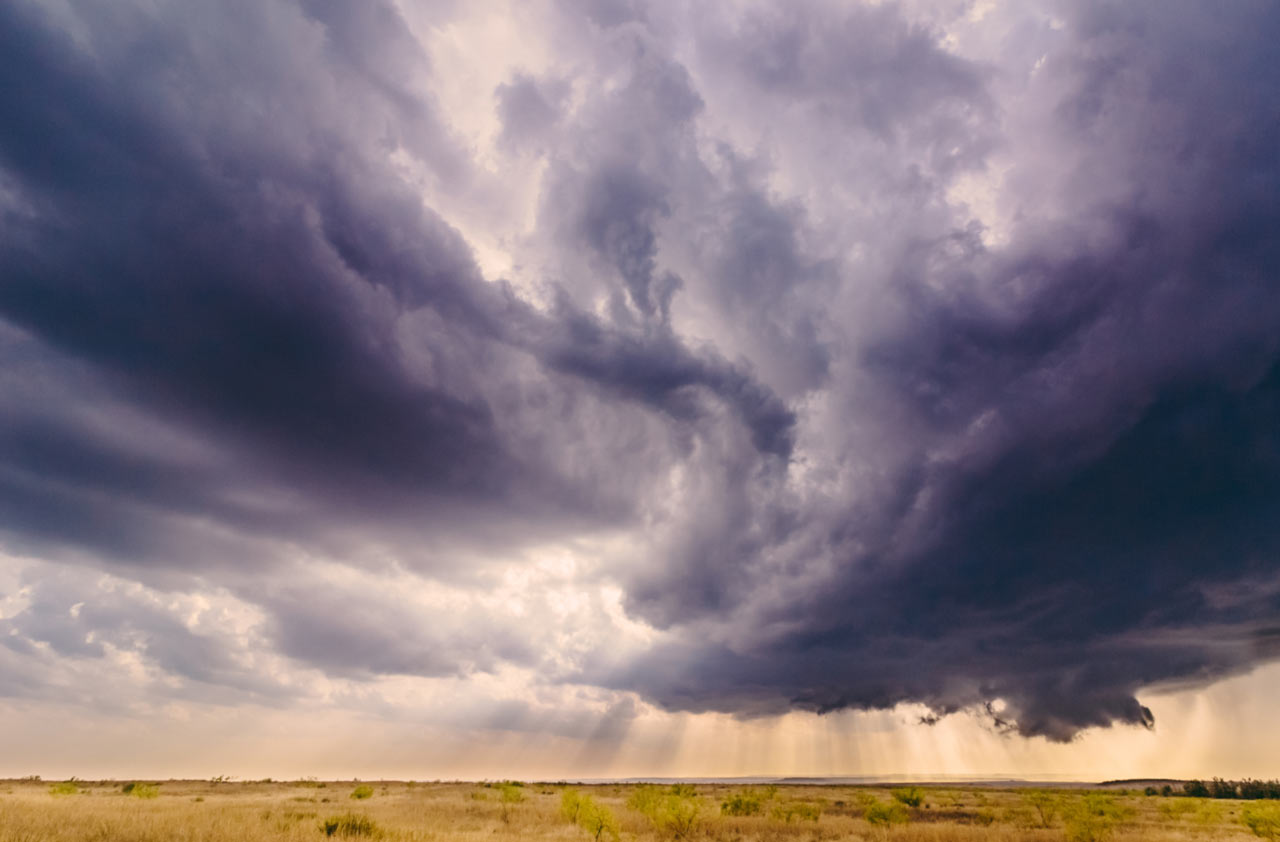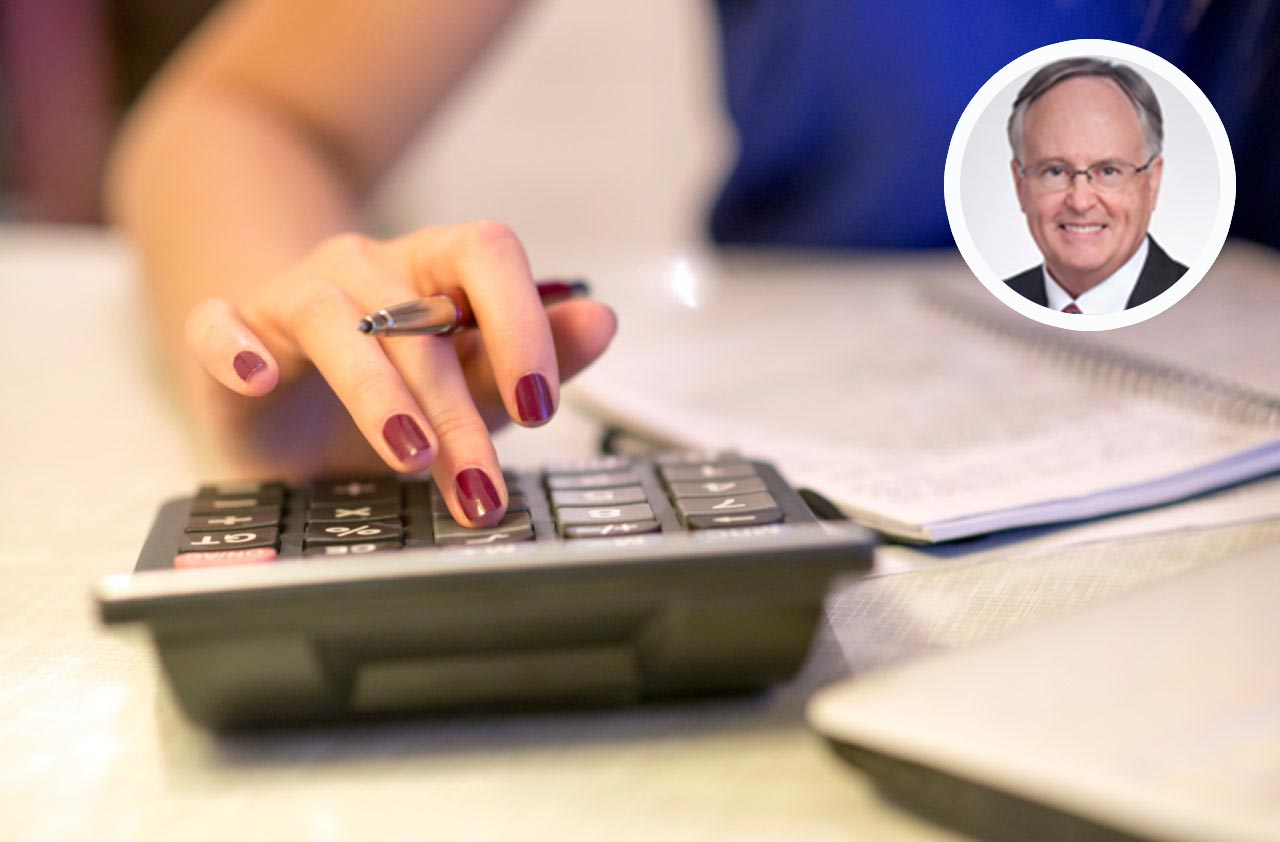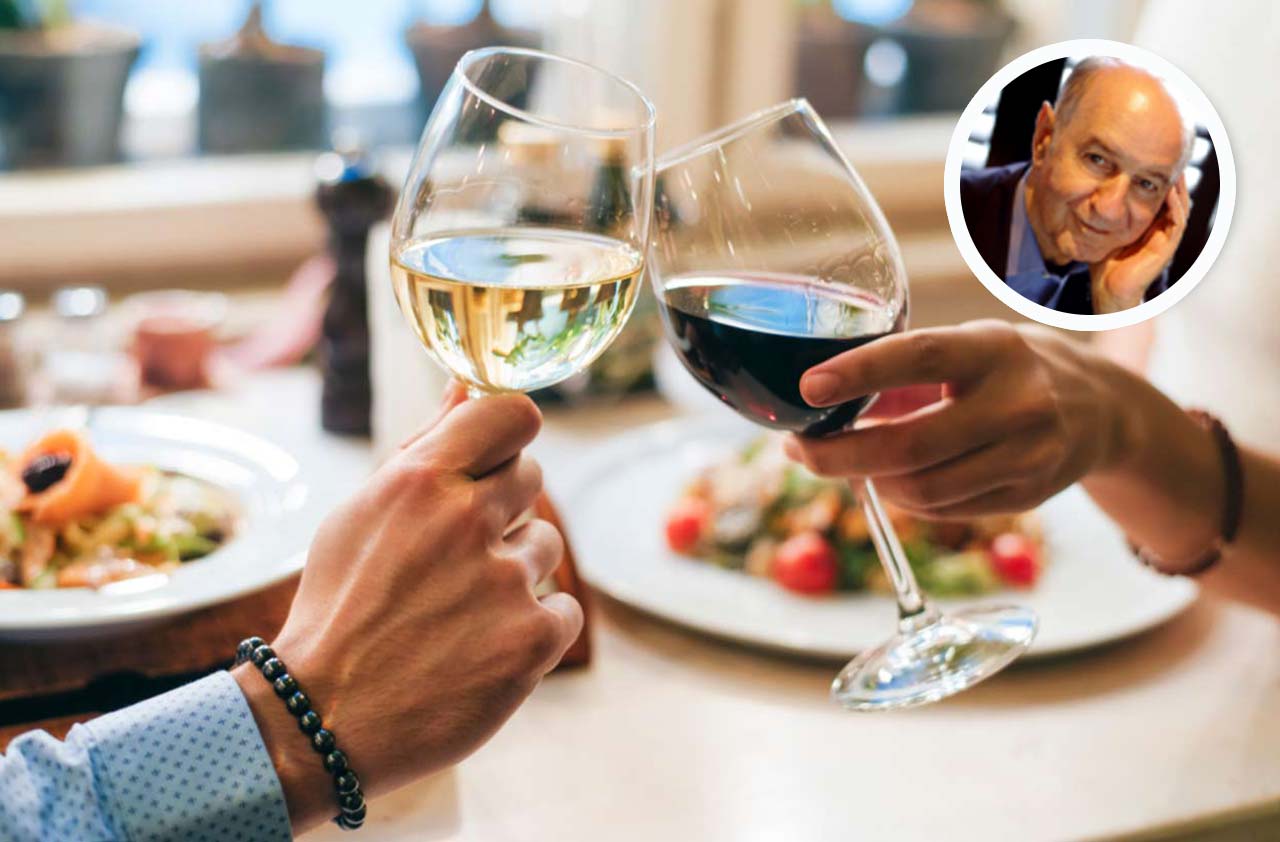Advice for Investors Worried About Today's Tumultuous Stock Markets
When the stock markets gyrate, financial professionals are busy folks, calming clients’ nerves with advice on how to handle the head-snapping volatility we’ve been seeing.

When the stock markets gyrate, financial professionals are busy folks, calming clients’ nerves with advice on how to handle the head-snapping volatility we’ve been seeing. In addition to old market worries related to Chinese trade tariffs and North Korea's nukes, European instability has now entered the picture as Italy careens toward an election that has bigger-than-Brexit potential.
We asked credentialed financial advisers and attorneys, whose columns appear on our Wealth Creation Channel, to share what they tell their clients to do during times like these and the days of almost 1,200-point drops back in February 2018. Here’s what 20 of them had to say.

Taylor Schulte: This is Completely Normal, and If You Own Bonds, You Made Money
Let's put it all into perspective. The Dow dropped 4.6% back on Feb. 5, or 1,175 points. It was the worst point decline in history. As a percentage, however, we have had 107 days worse than this one.
A "market correction" — defined by a drop of 10% or more — seems like a not-too-distant possibility. On average, this happens once a year.
- In other words, events like this are completely normal.
Side note: If you own U.S. government bonds, you made money that day. On the worst point decline in STOCK MARKET HISTORY, you made money.
Instead of trying to pinpoint the exact reason for the recent volatility, I want to ask you a question:
If your investment portfolio dropped in value by 30%, what would you do?
Scratch that. Let me ask you a different question first:
If the value of your home dropped in value by 30%, what would you do?
My guess is that you wouldn't race out to hire a Realtor and put your home up for sale.
That's because you have a long-term plan in place for your home, you accepted the risks of owning real estate going in, and owning a home has an important place in your family’s financial plan. You also probably don't want to realize a 30% loss on one of your largest assets.
So, back to my first question: if your investment portfolio dropped in value by 30%, what would you do?
If you think you would feel inclined to run out and put your portfolio up for sale, you probably aren't invested properly.
There is no better time than now to confirm you have a long-term plan in place for your investment portfolio. Because the stock market will drop 30%. I don't know when, but it will. On average, it happens about once every decade. And when it does, that is not the time to make major changes to your investments.

Barbara Shapiro: It’s Only Paper Losses (as Long as You Don’t Sell)
We knew this was going to happen, we just didn’t know when. The market has gone up so quickly without a correction it couldn’t possibly continue to climb.
What I’ve told my clients: We bought quality equities that will go down when the market tumbles but will rebound and be fine. We have been adding to the holdings gradually over time, and even with the dip you are still ahead.
- What all investors should remember: Have a long-term plan in place, keep your eye on the ball and don’t panic. Your "losses" are paper losses, and unless you actually sell a holding, they are not realized losses.

Charles Scott: We Were Due for a Pullback
When markets correct, it’s always faster and more severe than when they go up. It’s like walking up the stairs, one at a time, and then falling down them. Much faster on the way down. Just get up and walk up again.
This market was overbought and due for a correction. Most people know it, but no one likes it when it happens.
The investment markets are alive. They breathe in and they breathe out. The last couple of days have been a pretty good exhale.
— Charles C. Scott, president of Pelleton Capital Management, Ltd.

Michael Aloi: Stocks May be Risky, but Avoiding Them is Riskier
For the past nine years, investors have had it good. Almost too good. With returns like that it’s easy to imagine investors getting too comfortable with risk. But as economists remind us, it’s when we are most comfortable with risk that we are most susceptible to it. In other words — complacency kills.
Risk — as defined by volatility — is a natural part of investing. Without risk we would never be rewarded. We would all get the same low return on our money. But for those brave enough to stomach the huge down days, the reward is in the inevitable – the downs are temporary, and the ups are permanent. In 1992 the price of a movie was $4.50. Today it is about $12 — three times higher. The Dow in 1992 finished at 3,301. On Feb. 5, it closed at 24,345 — eight times higher.
- The real risk is not the big one-day drops in the market, but in not owning enough risky assets to keep up with rising prices. In other words, the real risk is more intangible — it is the slow erosion of your purchasing power over time that can lead to outliving your money.
So, what should you do? For starters, to paraphrase Warren Buffett, “Don’t test the depths of a river with both feet.” In other words, know yourself and how much risk you are comfortable with taking. If recent losses spooked you, you may be too heavy in stocks. In that case be thankful for the wake-up call.

John Barringer: A Sell-Off Has Brought Stocks Closer to Fair Value
February 2018 started off with a big market drop. Investors who have short memories may have already forgotten similar drops in the opening weeks of 2016 and the summer of 2015. In fact, it would have been odd for the stock market to climb as much as it did in the last year without taking a pause.
The jobs report released in early February showing workers’ pay rising faster than it has since 2011 was all it took for markets to suddenly be worried about Federal Reserve interest rate hikes, unintended tax reform consequences and inflation.
Selling off to December’s levels has adjusted the P/E ratio of the S&P 500 downward from what had been a relatively high 33 and puts the market closer to fair value. The spike in the Volatility Index (VIX) indicates that markets may continue to bounce around for the foreseeable future.
We continue to hold 8% cash in our portfolios, which we would expect to move back into the market if the S&P continued to sell off and approached the 200-day moving average, around 2550, representing about an 11% correction from the January high.
— John Barringer, Managing Partner at Executive Wealth Planning Partners

Stephen Korving: Economy is Strong; Pullback is Healthy Sign Markets are Returning to Normal
Following a virtual non-stop rally in the stock market since the beginning of 2017, we are not particularly surprised that the stock market should stop and take a breather. What many people find disconcerting about this sudden drop is its steepness and breadth.
Our view is that there is nothing fundamentally wrong with the economy, or with an increase in interest rates, which has been widely anticipated.
The stock market responds to the economy, and we see no indications that anything has changed since the start of the year. Hiring is up, wages are rising, and millions of people are getting bonuses that they haven’t seen in years. Take-home pay will go up for millions more Americans beginning this month. Lower corporate tax rates should lead to higher corporate profits, which should lead to higher stock prices. Still other corporations that have billions of dollars parked overseas, like Apple, are bringing a lot of that money home and are promising to invest it in the U.S. economy.
While the recent free-fall in the Dow has been spectacular, the markets have been abnormally placid for about eight years now. A healthy market sees run-ups and pull-backs. We don’t think this pullback signals the end of the bull market run, but rather that we might be getting back to a more historical norm.
— Stephen J. Korving, President & Chief Investment Officer at Korving & Company

Bill DeShurko: Use This Downturn as a Dress Rehearsal for a Real Bear
Any brief downturn illustrates the need to stress test your portfolio ahead of time. Hopefully this little hissy fit will soon be over, and it gives investors an opportunity to look at their losses. Look at what your loss would be if the market had dropped 40% instead of less than 8%.
- This has been a program trading sell-off. Think about what just happened even while every economic data point is showing a very strong economic year in 2018. Earnings growth estimates are higher than we’ve seen since the post financial crisis recovery. Now, think what might have been if the economic news were not so good! When earnings growth starts to slow and there is a reason to sell, it could trigger an avalanche caused by program traders.
- Use this bit of volatility to plan now for how you will handle a real bear market. Once it begins it will be too late.
What do I tell clients? I moved 20% of our Dividend Income portfolios out of a high-yield ETF and into DIVY about a month ago. We’re hedged. Dividend stocks that we own will not be affected in terms of dividends and dividend growth prospects for 2018, regardless of stock prices. Expect higher dividends by the end of the year.
— Bill DeShurko, Registered Investment Advisor at 401 Advisor, LLC

Harold Evensky: Turn Off the TV, Have a Good Dinner and be Patient
Take a deep breath and ignore the financial pornographers on TV. Remember, families are still enjoying Disney World and taking pictures with their new iPhones. The world didn’t come to an end, in fact, economically it’s in pretty good shape.
If you need your investment dollars today you’re, indeed, in trouble — bad planning. However, if you’re investing for the long term, you’re in luck: Stocks are on sale.
Time to rebalance, sell bonds and buy stocks. Remember, even if you’re 70 you’re likely to need money for another 15 or 20 years — that’s long term.
Turn off the TV, go out for a good dinner and continue to take deep breaths. This, too, shall pass and you will be rewarded for buying cheap stocks and your patience.

Paul Sydlansky: If Your Goals Haven't Changed, Don't Change Your Strategy
I have been telling clients a few things:
– This is normal. Markets fluctuate and go through periods of volatility. The fact that the headline is “largest point drop ever” is a bit misleading in that we are at all-time highs, and in terms of percentages this drop doesn’t even crack the top 100.
– Have your goals changed in the last week? If they have, we should discuss making changes. If not, we should stay the course.
– If you are having real trouble stomaching this volatility, we should really re-evaluate your equity exposure. The bull market stretch we are in is part of a cycle, and it will end … and the market will eventually drop further.

Chris Chen: We Still See a Future for This Bull Market
We have not experienced meaningful corrections in the recent past. However, it is worth remembering that, according to American Capital, historically 5% pullbacks happen three times a year, and 10% corrections happen once a year. The current pullback may just be a long overdue reminder that we are not entitled to volatility-free financial markets.
Heading into 2018, the consensus was that we were going to experience a continuation of the bull market at least into the early part of this year. This is still our view.
When it comes to your investments, verify that your investment profile matches your financial planning profile. If you haven’t measured your risk profile in a while, you may do so at this link. Unlike the stock market, it is risk free!
Finally, balanced funds and target date funds help mitigate the emotional roller coaster investors experience with increased volatility.

Oliver Pursche: 5 Signs This is Just an Overdue Correction
While it is impossible to predict what might happen next, there are several key data points that are providing reason for optimism and lead us to conclude that this is nothing more than an overdue correction to nine-year-long bull market.
- Gold prices, which historically rise with inflation expectations, have hardly budged.
- The U.S. dollar has stopped declining and seems to be establishing a new trading range. A firmerdollar will help stabilize bond and commodity markets, which consequently tends to calm equitymarkets.
- The VIX, or so called fear index, is indicating sharp short-term volatility, but only moderateintermediate and long-term volatility. This indicates a low probability of a prolonged or deepcorrection.
- Corporate earnings, both in the U.S. and globally, remain strong and are expected to continue tostrengthen. Strong economic and earnings growth are historically bullish.
- Futures are now indicating a lower probability of additional (to the two expected) rate hikes this year.
This should keep the bond market sanguine, thereby also calming equity markets.
From a portfolio-management perspective, remaining disciplined and avoiding emotional reactions to headline news reports and speculations are key to long-term investment success.
— Oliver Pursche, CEO of Bruderman Asset Management
This market commentary is written by Oliver Pursche and represents the views of Bruderman Asset Management, LLC. This commentary is not investment advice and should not be used as a basis to make investment decisions. Please consult with your registered investment advisor before making any investment decisions.

Gary Ran: Expect More Volatility Going Forward
We do not think the world is coming to an end. In fact, for the first time in years we have been experiencing synchronized global economic growth. However, there remain numerous challenges, including interest rate normalization and the unwinding of global central bank balance sheets. Some of these issues have never been dealt with before, and it’s hard to know how the markets will react. Accordingly, one should expect increased volatility in the financial markets.

Michael Macke: The Bucket Strategy Can Bail You Out
We talk with clients right upfront about having a holistic plan that can weather the market storms when they come. We set money aside in the bank for paying the bills, taking vacations, spoiling the grandkids and having an emergency fund.
It is hugely important to take the next step, setting up a bucket of money to provide income needs for up to a 10-year period that is going to be minimally affected, if at all, by market downturns. This allows you to maintain a long-term focus with any market-based investments.
I think people may have forgotten how it feels to be in a market decline. We want to remind people that their plan is based first and foremost on their goals, and we need to first find out if the market has changed their goals. Probably it hasn’t, but that does not change the fact that people are scared.
I can never forecast the economy, time the market, or predict the future based on the past. I absolutely can make a plan, provide historical perspective and help modify behavior that hurts more than helps.
— Michael K. Macke, Vice President and Co-owner of Petros Estate & Retirement Planning

Justin Goodbread: Don’t Throw in the Towel after 1 Down Day
Now that the market has you contemplating your future, it's time to sit down and assess your goals. Step back and get control of your emotions. See what is working and what is not and decide with your financial planner if you need to make some changes based on two things:
- Your risk tolerance. If you have set your portfolio to match your risk tolerance, you may not have anything to do. However, take this time to double check where you are in life. It’s been almost nine years that we’ve been in this bull market. Perhaps over time you set things on cruise control and let the chips fall where they may. At the same time, life has changed, and maybe you don’t need to be as aggressive as you have been in the past. Or it is possible you may need to be even more aggressive. The point is that it doesn’t matter what transpired with the Dow. The key is to make sure that your portfolio is in line with your risk tolerance, and now is a good time to check.
- Your time horizon. If you’re dealing with retirement monies and you are in your 20s or 30s, go to sleep. Don’t worry about what happened. Just make sure you’re invested where you want to be. However, if you’re in your 50s or 60s and retirement is in the next five to 10 years, have a conversation with your financial planner. We don’t know where the market is headed from here, and you may need to make adjustments if you’re going to be using this money soon.
— Justin Goodbread, Founder and CEO of Heritage Investors

T. Erich Reich: The Markets are Just Blowing Off Steam
While sudden drops can be unsettling, I see this as a “pressure release valve” in an otherwise rising market.
We need to keep in perspective that 2008 (the worst market decline since the Great Depression) to a record high was a mere five years. If your assets will not be spent in that time period, then I do not suggest making any changes to your portfolio.
- The reason trying to “time the market” doesn’t work is because you have to guess not only the top (when to get out of the market), but equally as important, you have to guess when to get back in. This is where investors most often fail.
Waiting too long to get back in, which is the most common mistake, often results in worse long-term results than simply letting the markets correct naturally and staying put.
— T. Eric Reich, President and Founder of Reich Asset Management, LLC

Joe Bert: Keep Things in Perspective: This is Not the Beginning of a Recession
It would do us well to compare the major economic statistics of the era of the 2008-9 recession to today’s numbers. In March 2009, when the market hit its nadir, the unemployment rate stood at 8.5%. Today the unemployment rate stands at 4.1% (a better than 50% improvement).
On Feb. 24, 2009, the Conference Board reported that the consumer confidence level had fallen to 25, its lowest point since its inception in 1967. Today the confidence level stands at a historic high of 125.4!
And finally, 2009 saw a shrinking GDP number bottoming at -2.8%. Last year, we enjoyed a GDP number in the 3% range!
- Combine the strong fundamentals above with the yet-to-be-felt effects of the recently enacted tax cuts, one would be hard-pressed to make a case that we are going into a recession. Sure, dips are a part of investing, but they present an opportunity for those savvy enough to act.
— Joe Bert, Chairman and CEO of Certified Financial Group, Inc.

John Riley: Keep Only the Stocks You Truly Believe in for the Long Haul
The recent sell-off should not have taken anyone by surprise. The market is the second most overvalued market in over 100 years. It is more overvalued than the 1929 peak and more overvalued than before the 2008 crash.
Overvalued markets are fragile. They can fall for any reason.
- Investors should take a hard look at their holdings and lighten up on stocks. They need to reduce their equity exposure and only hold onto those securities that they would still want to own even if the market dropped 25%, 35%, even 50%.
— John Riley, Chief Strategist at Cornerstone Investment Services

Marguerita Cheng: Follow the Good Old Investing Rules; They Still Apply!
My recommendations to investors today are tried and true strategies:
– Diversification.
– Dollar cost averaging (many investors don’t realize that they’re doing this with their 401(k) plans).
– Understand the difference between short-term savings and long-term investments. Short-term savings are liquid and readily accessible without risk to principal. Investments are earmarked for longer-term goals. Their values can fluctuate, but the growth of stocks, stock mutual funds, stock ETFs outpaces inflation over the long term.
– Have a financial plan to help you keep focused on the long term.

Kevin Peacock: Stay the Course
Our advice centers around avoiding taking drastic action and stepping back to look at the big picture. Before making any investments, we collaborate with our clients to create an investment plan that focuses on meeting the goals that matter most to each individual.
Instead of focusing on short-term market movement, shifting the conversation to progress toward saving for retirement, starting a business or funding a child’s education is what truly matters.
A well-designed, diversified portfolio will experience fluctuations, but remember that markets reward investors for remaining disciplined and staying the course.
— Kevin Peacock, Founding Partner of Astra Capital Management

Eduard Hamamjian: I Still See a Bull Market for the Next 13-20 Years
Bull markets don’t end in the face of rising revenues and improving margins with a backdrop of fewer regulations and reduced taxes. The idea that the Fed will raise interest rates with increasing velocity is silly when compared to the structural problems of the current labor markets. We have, after all, been talking about deflation for the past 10 years as the primary threat to markets and our economy.
The fact is that markets have secular cycles that do not end because of profit taking in the short run or mispricing of certain assets. I still see a bull market for the next 13-20 years.
— Eduard Hamamjian, Investment Adviser at GeaSphere Advisors LLC
Get Kiplinger Today newsletter — free
Profit and prosper with the best of Kiplinger's advice on investing, taxes, retirement, personal finance and much more. Delivered daily. Enter your email in the box and click Sign Me Up.
-
 Stock Market Today: Stocks Struggle Amid Tariff Uncertainty
Stock Market Today: Stocks Struggle Amid Tariff UncertaintyBoeing dropped after China suspended new aircraft orders, while Bank of America and Citi climbed on earnings beats.
By Karee Venema
-
 Starbucks 2025 Dress Code Changes: See the New Look
Starbucks 2025 Dress Code Changes: See the New LookThe 2025 Starbucks dress code change features a uniformed look as part of creating a more familiar and friendly cafe experience.
By Sean Jackson
-
 What to Do With Your Tax Refund: 6 Ways to Bring Growth
What to Do With Your Tax Refund: 6 Ways to Bring GrowthUse your 2024 tax refund to boost short-term or long-term financial goals by putting it in one of these six places.
By Rachael Green
-
 What Does Medicare Not Cover? Eight Things You Should Know
What Does Medicare Not Cover? Eight Things You Should KnowHealthy Living on a Budget Medicare Part A and Part B leave gaps in your healthcare coverage. But Medicare Advantage has problems, too.
By Donna LeValley
-
 Fed Leaves Rates Unchanged: What the Experts Are Saying
Fed Leaves Rates Unchanged: What the Experts Are SayingFederal Reserve As widely expected, the Federal Open Market Committee took a 'wait-and-see' approach toward borrowing costs.
By Dan Burrows
-
 12 Great Places to Retire in the Midwest
12 Great Places to Retire in the MidwestPlaces to live Here are our retirement picks in the 12 midwestern states.
By Stacy Rapacon
-
 10 Cheapest Small Towns to Live In
10 Cheapest Small Towns to Live InThe cheapest small towns might not be for everyone, but their charms can make them the best places to live for plenty of folks.
By Dan Burrows
-
 15 Reasons You'll Regret an RV in Retirement
15 Reasons You'll Regret an RV in RetirementMaking Your Money Last Here's why you might regret an RV in retirement. RV-savvy retirees talk about the downsides of spending retirement in a motorhome, travel trailer, fifth wheel or other recreational vehicle.
By Bob Niedt
-
 The Cheapest Places To Retire in the US
The Cheapest Places To Retire in the USWhen you're trying to balance a fixed income with an enjoyable retirement, cost of living is a crucial factor to consider.
By Stacy Rapacon
-
 Fed Sees Fewer Rate Cuts in 2025: What the Experts Are Saying
Fed Sees Fewer Rate Cuts in 2025: What the Experts Are SayingFederal Reserve The Federal Reserve cut interest rates as expected, but the future path of borrowing costs became more opaque.
By Dan Burrows
